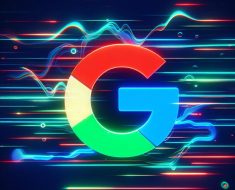AI technology has integrated into our daily routines more than most people realize. Whether we’re asking Siri for the weather or receiving tailored product recommendations online, intelligent systems are constantly working behind the scenes. In the sections below, we’ll break down how AI technology works, explore different types, and see how it’s being put to use in everyday life¹.

What is the Technology of AI?
AI technology refers to software and machines built to perform tasks that generally require human intelligence. This includes language understanding (natural language processing), identifying visual patterns (computer vision), and improving over time through exposure to data (machine learning)¹’³. For instance, an AI system can study millions of images to learn how to recognize objects and then use that knowledge to interpret new images³.
Essential parts of AI technology include:
– Machine Learning (ML): Algorithms learn from examples in data.
– Deep Learning: A more advanced type of ML using complex neural networks.
– Natural Language Processing (NLP): Lets machines understand and respond to spoken or written language.
– Computer Vision: Teaches AI to interpret what it “sees” in images and videos³’⁹.

What Are the 4 Types of AI Technology?
Researchers often categorize AI into four main groups¹’²’⁵:
1. Reactive Machines: Respond directly to the current situation without storing past experiences. An example is IBM’s Deep Blue, designed to calculate chess moves instantly⁵.
2. Limited Memory: Refers to AI that can store and use past information. Self-driving cars analyze current traffic data alongside past observations to drive more safely¹’²’⁵.
3. Theory of Mind: Still in development, this type of AI aims to understand emotions and intentions, paving the way for more empathetic human-machine interactions¹’²’⁵.
4. Self-Aware AI: Purely theoretical at this stage, self-aware AI would be able to recognize and understand its own existence¹’²’⁵.
Each category offers unique strengths and is suited for different real-world applications.

What is an Example of AI Technology?
Personal assistants such as Siri and Alexa are widely recognized examples of AI technology used to make tasks simpler. They use natural language processing to interpret requests and deliver relevant answers¹². In healthcare, AI-powered software can scan medical images like X-rays or MRIs to detect signs of illness early, allowing doctors to refine diagnoses⁷.

How is AI Being Used Today?
AI shows up across a variety of fields:
– Healthcare: Algorithms can spot diseases early or suggest treatments¹².
– Finance: Fraud detection systems analyze large sets of data to find unusual patterns⁷.
– Retail: Apps recommend products based on a user’s browsing or purchasing history².
– Automotive: Systems in self-driving cars interpret surrounding traffic conditions to navigate roads¹’²’⁵.
In e-commerce, platforms often rely on AI for product recommendations, increasing the chances you’ll find something that matches your preferences².

Is Siri an AI?
Yes, Siri is a great example of AI technology at work. Using machine learning and natural language processing, Siri listens to spoken questions and responds by pulling information from various sources. Over time, it even tailors responses to your habits³’⁸.

What is the Most Common Type of AI Used Today?
Machine learning and natural language processing are currently the most widespread forms of AI. You can find them in recommendation systems, customer service chatbots, and systems that suggest what you might like to watch, buy, or read³’⁹.

How Can the Average Person Use AI?
Most people interact with AI every day through:
– Smartphones: Virtual assistants that set reminders or answer questions.
– Streaming Services: Algorithms suggest new shows or songs.
– Navigation Apps: Tools like Google Maps use AI to plan faster routes based on traffic data¹’².
These simple, convenient uses of AI help with daily tasks without requiring technical expertise.

What Problems Can AI Solve?
AI has proven useful in tackling various issues:
– Forecasting diseases in healthcare⁷.
– Boosting efficiency in factories with automated robots⁹.
– Analyzing environmental data to address climate-related challenges⁷.
For example, climate specialists rely on AI tools to assess long-term weather changes, which can help guide policies and conservation efforts⁷.

Is Alexa an AI Assistant?
Yes. Like Siri, Alexa relies on AI technology—specifically NLP and machine learning—to handle voice commands. Alexa offers services like controlling home devices, playing music, or giving quick answers to common questions³’⁸.

Can I Use AI for Free?
Absolutely. There are plenty of free AI-driven tools:
– Writing helpers: Basic versions of apps like Grammarly offer AI-powered suggestions.
– Translation Tools: Google Translate and others provide free language translation services.
– Virtual Assistants: Google Assistant and others come pre-installed on many smartphones³’⁸.
These make AI accessible to just about anyone willing to explore new ways to simplify tasks.

Who Created AI?
AI started evolving through contributions by many researchers. In the mid-20th century, Alan Turing’s work on machine intelligence laid the groundwork for what we recognize as AI. His famous “Turing Test” helped spark discussions on whether machines could ever mimic human intelligence¹’³.

Is AI Helpful or Harmful?
There’s no simple answer. On the beneficial side, AI helps with efficient operations, better diagnostics, and creative problem-solving¹’². On the cautionary side, it raises concerns about privacy, job loss, and potential biases unintentionally embedded in data¹’³. Striking a balance involves ongoing efforts to regulate and guide AI in a responsible way.

Who is the Father of AI?
John McCarthy is often called the father of AI for coining the term “artificial intelligence” in 1955 and making crucial early contributions to the field³.

What is AI’s Weakness?
AI technologies, despite their prowess, do have shortcomings:
– Dependence on large amounts of data.
– Challenges with creativity and intuition.
– Risk of propagating biases found in training datasets¹²³.
Even with these limits, AI can still excel at analysis, improving decision-making in many industries.
Conclusion: The Impact of AI Technology on Everyday Life
AI technology has quietly woven itself into everyday life, guiding our online searches, assisting in medical breakthroughs, and shaping how we manage daily tasks. While it offers remarkable advantages, it’s essential to stay aware of its drawbacks and ethical concerns. By understanding the range of possibilities AI technology provides, we can make more informed decisions and use these systems responsibly as they continue to develop.
Citations
- Mclaughlin, Karen. “AI and Its Impact on Our Daily Lives.” LinkedIn, 2 Nov. 2023.
- “Enhancing Everyday Life: How AI Is Revolutionizing Your Daily Experience.” Morgan State University, 21 Nov. 2023.
- Jha, Deepak K. “Artificial Intelligence (AI) Vs Machine Learning (ML) Vs Deep Learning.” LinkedIn, 19 July 2023.
- “The Basic Components and Branches of Artificial Intelligence.” SOCi, n.d.
- “Exploring AI: Unravelling the 4 Types of Artificial Intelligence.” Eternal Works, n.d.
- “Understanding the Different Types of Artificial Intelligence.” IBM, 14 Aug. 2024.
- “The Impact of AI: How Artificial Intelligence Is Transforming Society.” 3DBear, 7 Mar. 2024.
- Marr, Bernard. “The 10 Best Examples Of How AI Is Already Used In Our Everyday Life.” Forbes, 16 Dec. 2019.
- “Key Components of Artificial Intelligence (AI).” Future Skills Academy, 13 Nov. 2024.
Please note, that the author may have used some AI technology to create the content on this website. But please remember, this is a general disclaimer: the author can’t take the blame for any mistakes or missing info. All the content is aimed to be helpful and informative, but it’s provided ‘as is’ with no promises of being complete, accurate, or current. For more details and the full scope of this disclaimer, check out the disclaimer page on the website.



